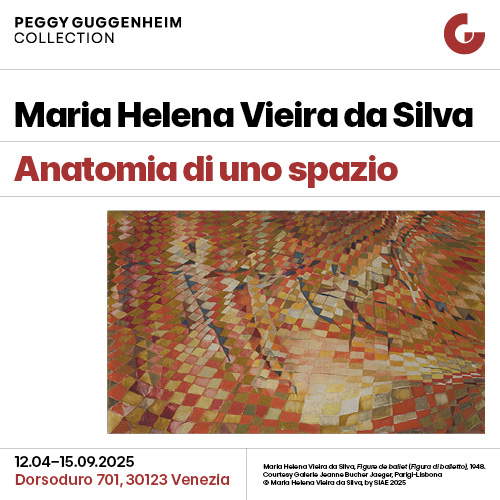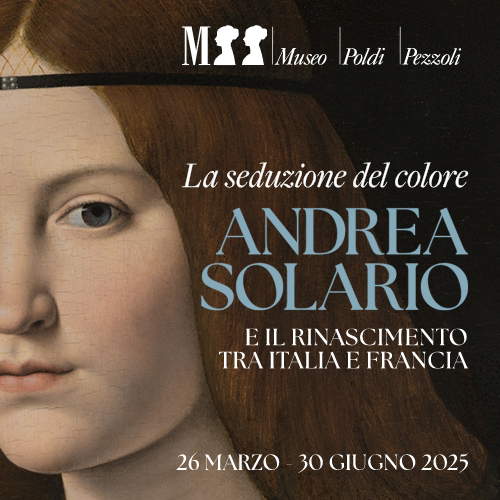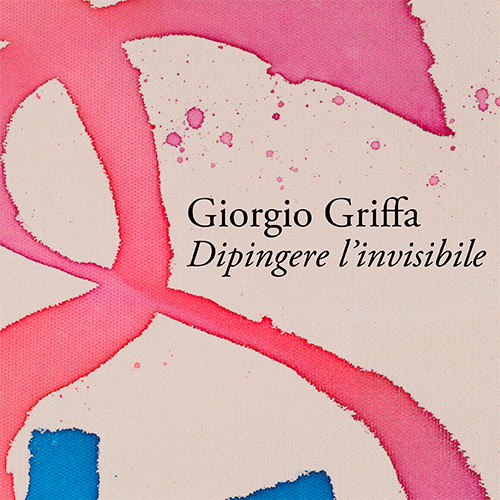An American film set in Val d'Orcia has been raging on Netflix for days: La Dolce Villa
Since last February 15 firmly in first place among the most viewed movies on Netflix Italy is an American production about Tuscany filmed in Val d’Orcia, iconic places of this region that has its heart in thisUnesco World Heritage Site (for its landscape and the historic ’Ideal City’ of Pienza). We are talking about La dolce villa, which since Valentine’s Day has been available on the well-known streaming content platform, which in 2024 recorded 8.1 million unique monthly customers (Agcom data) and every day puts the Top Ten ranking of series and movies in its catalog. San Quirico d’Orcia and Pienza are the absolute stars even if in some cases the skyline of the well-known Sienese towns have been photoshopped with added towers and bell towers here and there. Nevertheless, it is definitely a great spot for Tuscany, its culture and its “dolce far niente” as repeated in the film, identified as an ideal place to move to and live in.
La dolce villa was produced by Netflix for the international market and is the classic American romantic comedy that in this case is also peppered with the stereotypes with which Italians are represented around the world. The title is a clear reference to Fellini’s Dolce vita and the film is a narrative of ’good Tuscan living,’ with the exaltation of cuisine, food, art and nature, of Tuscany as a place to live, to move to. We can also say that all of this is the real star of the film since the plot is - shall we say - a bit light: it is precisely the landscapes of the Val d’Orcia or the scenic squares of San Quirico d’Orcia and Pienza that attract the viewer more than the rest even if - mind you - the scenes with the glimpses and views of the palaces were later retouched during editing: freedom also made possible by the fact that the place in which the film is set is a fictional (but admittedly in Tuscany) location, the fictional town of “Montezara,” and there was therefore no need to film and show an existing town in its reality.
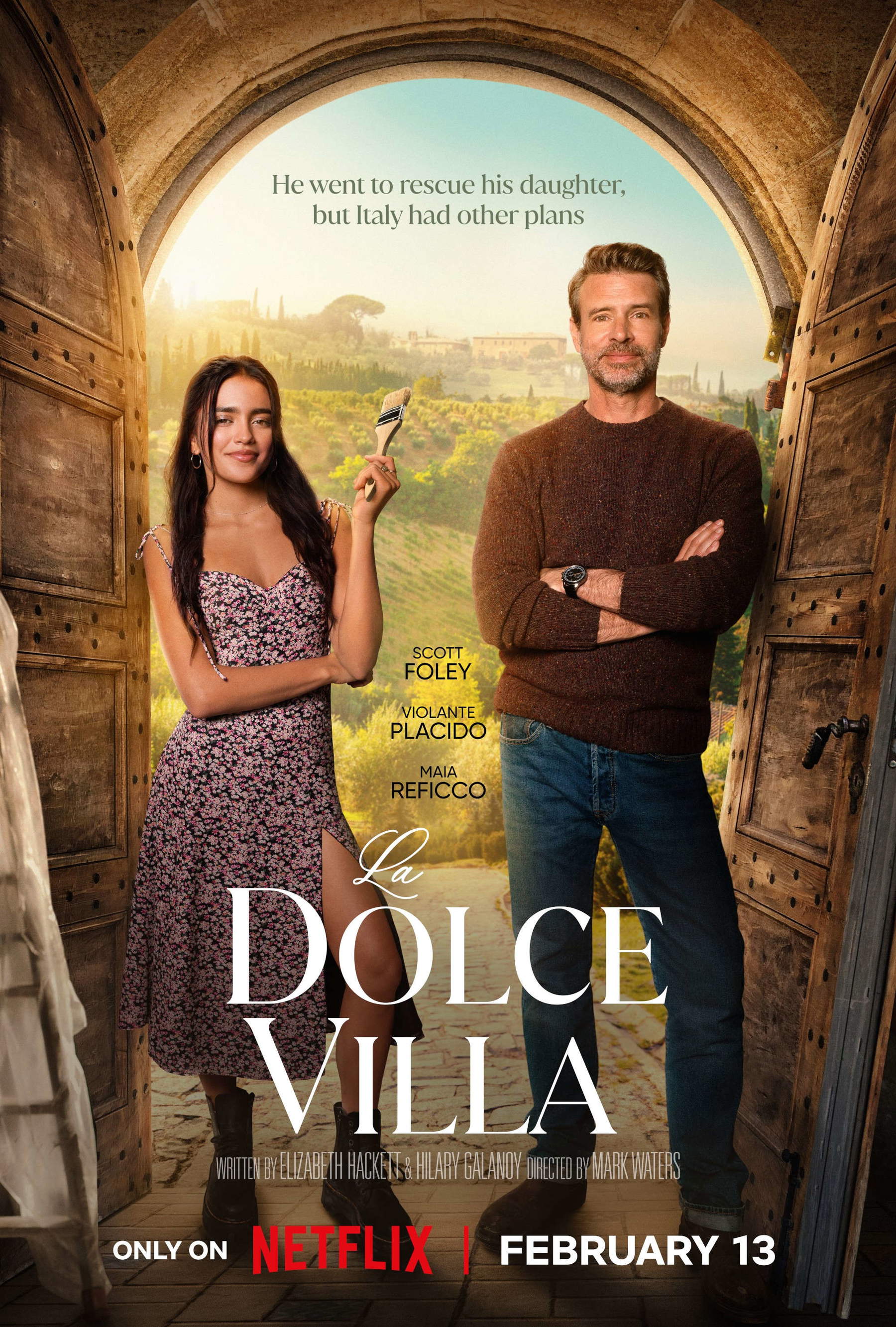
The story is about a father (Scott Foley) who flies to Italy to retrieve his daughter (Maria Reficco) who has informed him of her decision to stay and live in Tuscany by taking the opportunity to buy an abandoned house for one euro. In fact, the mayor of Montezara (Violante Placido) is thinking of repopulating the village with this idea, which in some ways is similar to a measure actually taken by the Region of Tuscany, which with the same intent offers contributions of 30 thousand euros for those who decide to move to mountain villages. A call that has been very successful as 843 applications were received. Finestre Sull’Arte reported on it, and the news also came out in USA Today: as for the British in the 1990s, Tuscany is becoming for Americans the buen retiro destination with dozens of villas and cottages bought (but not for one euro...) to come and live there (and, by the way, if you want to learn more about the beauties of Val d’Orcia Finestre Sull’Arte also offers a 10-step itinerary).
To be precise, the farmhouse chosen by the daughter to go and live there in reality is located in the Viterbo countryside, but the cinematic licenses do not end there: as Cristiano Ciacci, a pediatrician from Pienza, points out on social media, in the film we see an overview of Pienza where the cathedral has been integrated with the bell tower of the Collegiate Church of San Quirico, and in the background, the town hall has a bell tower replaced by another existing one also in San Quirico. Dr. Ciacci, as reported in the Siena chronicle of La Nazione, comments, “This substitution of bell towers from Pientino with others from San Quirico reminded me of the ancient rivalry between the two centers, which experienced its highest moments when the respective soccer teams were opponents in the same leagues and expressed itself mainly in teasing and jokes. Here, if this had been a joke, it can be said that it would have succeeded well.” Tuscany, it is known, is a land of bell towers and everyone cares about his own, it is therefore inexplicable why the photo montage additions, the buildings are moreover from different eras. “Although renamed Montezara, San Quirico is the main location of the film,” the doctor from Pienza writes again on social media, “so perhaps, even in the panoramas, the authors will have wanted to tread lightly on that place,” and then goes on to discuss the director’s other scenic games that make places in Pienza and San Quirico seem close in reality far apart. In one scene, “the protagonist is seen riding his bike into Piazza Pio II and after a moment he emerges at the entrance to the Horti Leonini. In my opinion,” he comments, “such crude modifications are not good either for those who host the workings, thinking of the benefits that may accrue to them, or for the onlooker who is either fooled or may harbor the doubt that he has been.”
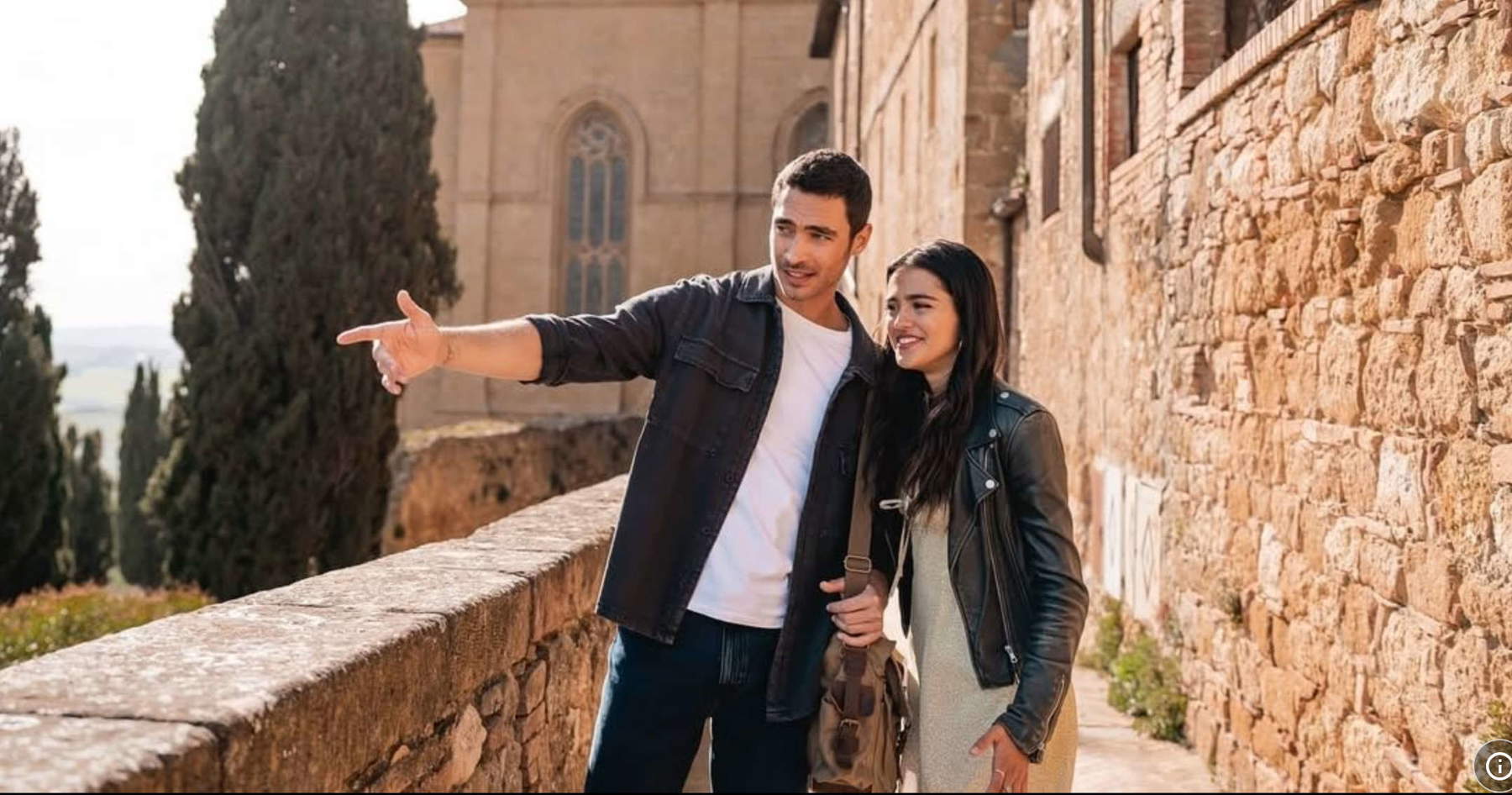
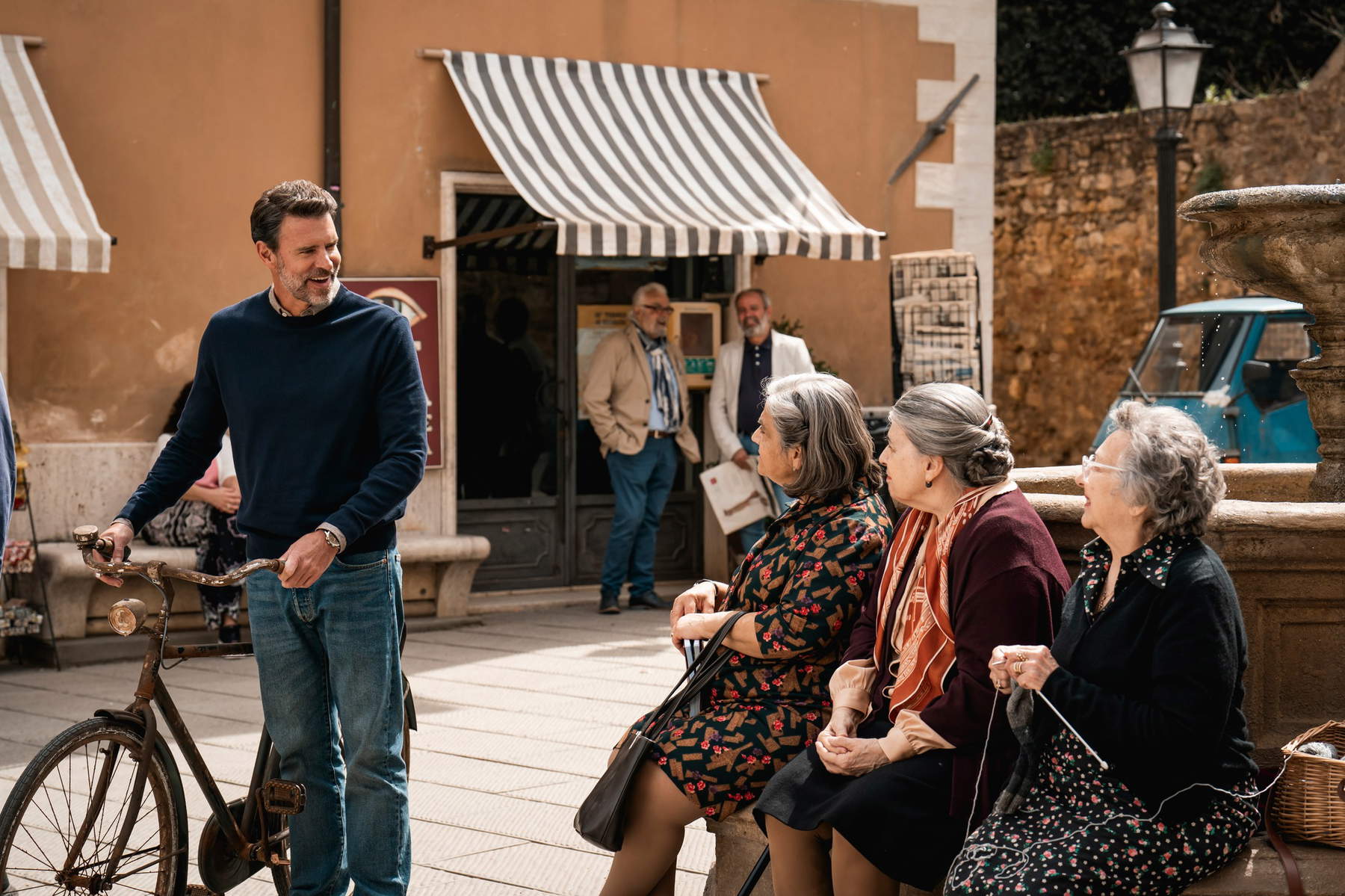
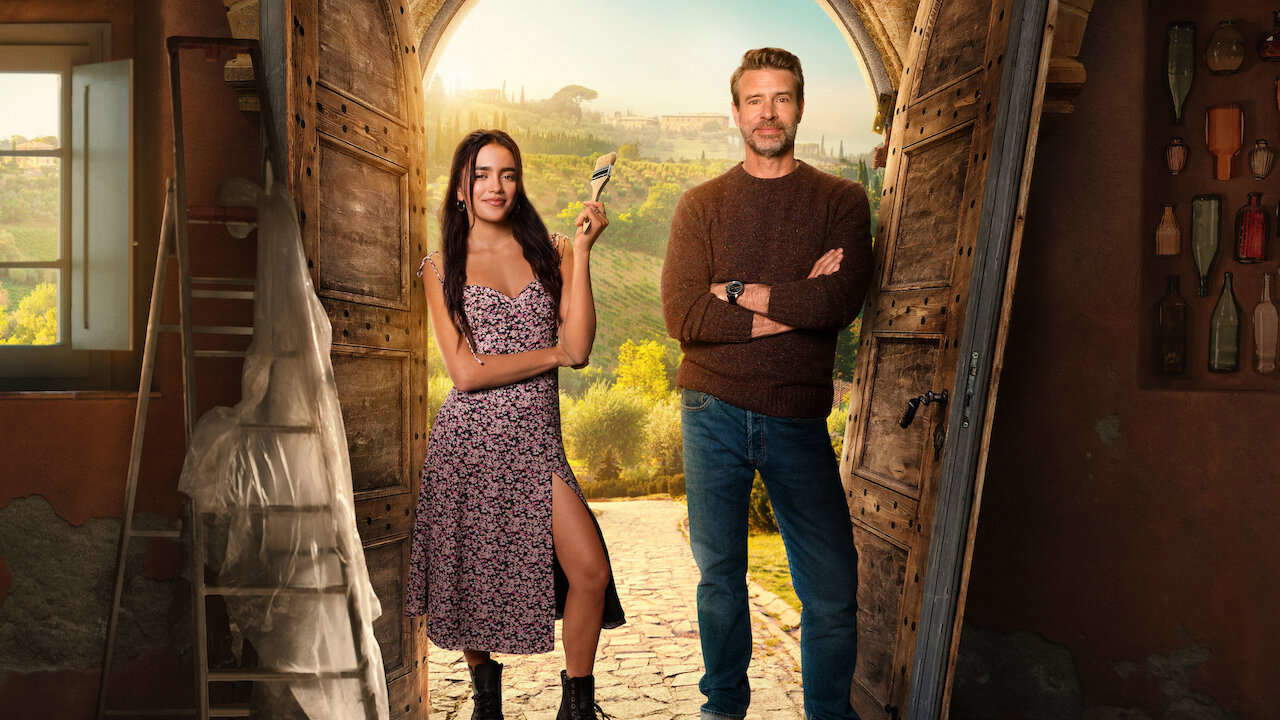
The mayor of San Quirico, Marco Bartoli, interviewed by the Corriere di Siena before the film’s release, said he was very happy: “The decision to come and shoot here confirms the appeal that the area continues to have, even to productions of this type. It will certainly be a nice calling card for San Quirico d’Orcia, the film will allow the Valdorcia to become even more known. This is how the territory is enhanced.” Filming lasted about a month last spring and the “production was absolutely respectful of the times and rhythms of the citizenship, they were not intrusive at all.” And on the outcome he expects a postive return of Mark Waters’ film “certainly will ensure great visibility.”
Another protagonist is Sienese cuisine with the exaltation of its typical products: from Brunello di Montalcino to panforte, from maltagliati with mushrooms to prosciutto di cinta, from pecorino to ice cream. Between background opera music and one by Mina, clichés are consumed, but it is undoubtedly a territorial marketing action that will help keep the myth of Tuscany firm. A Tuscany between tradition and modernity that combines, as seen in the film, the beauty of the quaintness of a country village with the modernity of electric car charging stations or internet connection with which to work with America from the comfort of one’s own cottage. A smart working promo for overseas freelancers. Of note are the final thanks: in fact, the credits read that thanks go to “Towns, human residents, dogs and cats of San Quirico d’Orcia, Pienza and Montepulciano in Tuscany”...the towns, the residents but also...the dogs and cats.
 |
| An American film set in Val d'Orcia has been raging on Netflix for days: La Dolce Villa |
Warning: the translation into English of the original Italian article was created using automatic tools. We undertake to review all articles, but we do not guarantee the total absence of inaccuracies in the translation due to the program. You can find the original by clicking on the ITA button. If you find any mistake,please contact us.





